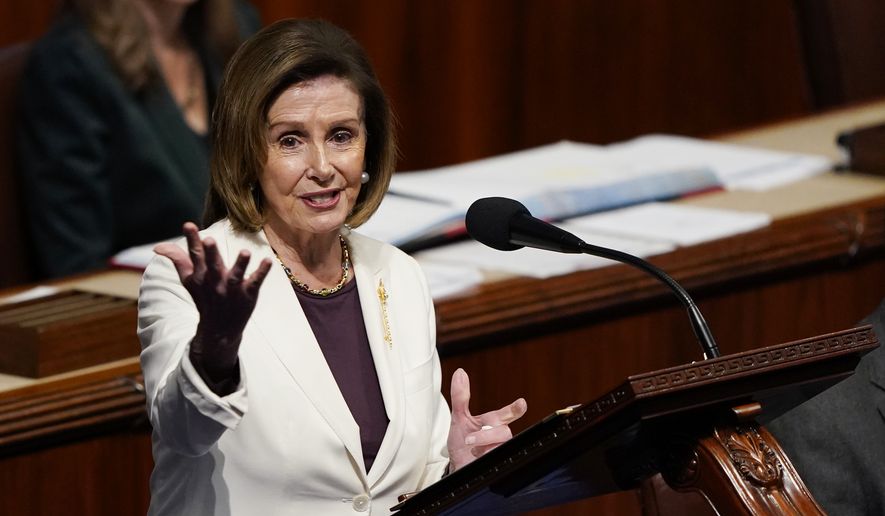OPINION:
If you were to ask 10 different people what the No. 1 problem in America is today, there’s a good chance at least seven of them would say inflation. At least that’s what the polls say. The rapid rise in prices over the last two years, especially among essential goods like food and gasoline, has many people uneasy about their personal economic future.
We know what causes inflation: too much money chasing too few goods and services. That’s what’s going on now, thanks to congressional overspending made law by President Biden.
Under the cover of COVID-19 relief, Mr. Biden and the Democrats running Congress used measures like the American Rescue Plan and the Inflation Reduction Act to flood the economy with money. Prices went up faster than at any time since the 1970s. Now, almost everyone is wondering if they’ll have enough money to get through to the end of the year.
There are ways to stop inflation. One is to wring it out of the economy by raising interest rates. Federal Reserve Chair Jerome Powell is well down the road on that score and has some economists predicting prices will soon stabilize because of it.
Perhaps, but it’s the agonizing way to do it. It’s like trading a broken hand for a broken foot. Both are painful, inconvenient, and hard to manage. The better way would be to accelerate growth in the economy to increase productivity in order to produce more goods and services.
For that to work, Congress is going to have to start by putting the brakes on spending. It has the tools available to do that now, even in the upcoming lame duck session over which House Speaker Nancy Pelosi will still preside if she chooses to abide by a law she herself had a hand in passing.
Back in 2010, when Barack Obama was president and the Democrats ran the House and Senate, Congress passed the Statutory Pay-As-You-Go Act or PAYGO. It requires that any new spending that increases the deficit be offset by mandatory cuts in spending — and if Congress doesn’t make the cuts, the president is required to.
The reason this hasn’t happened is that PAYGO can be waived — and has been anytime it’s been an issue. If the Republicans can persuade just a handful of Democrats in each chamber to stick with them in opposition to a waiver in the lame duck, it would trigger what The Heritage Foundation and others estimate is a $130 billion bill cut in federal largess.
The beauty of it all is that waiving PAYGO is an active process that requires members of Congress to do something. The folks who want to stop spending can do the right thing by doing nothing, something that we’ve observed over the years is a favorite congressional pastime. In that scenario, Mr. Biden has to make the cuts — they’re not across the board, he can’t touch Social Security, and Medicare can be left out of it — but he still probably doesn’t want the responsibility since the people and institutions who might be affected the most by cuts are the ones whose support and votes he needs to win a second term.
The second option is for Congress to propose and pass a package of cuts equivalent to what is required under PAYGO. That’s an easy list to assemble without touching defense or Social Security, which are off limits, or Medicare, where the rate of increase can be capped without making real cuts. The politically unpopular decision to give the IRS $80 billion in new money to hire more agents to conduct random audits and harass hardworking taxpayers, never mind what Treasury Secretary Janet Yellen promised in writing is a big, fat, juicy, popular spending cut waiting to happen.
That alone gets things more than halfway to $130 billion. There are probably funds left unallocated and unspent from the most recent congressional spending binge that could be clawed back, getting things closer and closer to the amount that has to be cut. Politically, it should be easy.
Something will be done. Congress can make cuts. Mr. Biden can make cuts. Or PAYGO can be waived, leading to no cuts at all. Given that the current inflationary spiral has cost the average American worker $3,000 in purchasing power and added more than $3 trillion to the national debt — borrowed money financed at higher interest rates thanks to inflation — the decision about what to do seems clear.




Please read our comment policy before commenting.